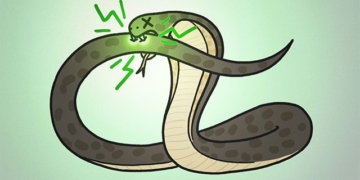Once upon a time, in ancient Rome, scribes (professional religious scholars of that era) wrote on papyrus with a metal tool called a stylus. This tool left faint but readable marks. Later, styluses were made of lead, which we now refer to as a “pencil.”
Graphite
Graphite in England:
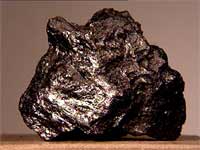 |
Graphite |
In 1564, in Borrowdale, England, a man stumbled upon graphite at the roots of an uprooted tree. The mysterious mine quickly became the talk of the village. After this graphite mine was exploited, the use of graphite became widespread. Graphite left a darker mark but was too soft and easily breakable, necessitating a holder. Initially, graphite sticks were wrapped in string. Later, graphite was encased in wooden holders, allowing the user to push out the graphite as needed. Thus, the pencil was born.
The first pencils were produced in Nuremberg, Germany, in 1662. During the wars with England, pencils used in America were imported. It wasn’t until 1812 that William Monroe in Massachusetts created the first American pencil. In 1729, Benjamin Franklin advertised pencils in his Pennsylvania Gazette. George Washington used a 3-inch (7.5 cm) pencil when he survived in the Ohio Territory in 1762.
Graphite in America:
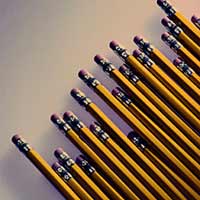 In 1821, Charles Dunbar (brother-in-law of author Henry David Thoreau) discovered a layer of graphite deposits in New England. This graphite was certified as the best quality ever found in the United States. Due to its superior quality, Thoreau pencils were regarded as the finest in America.
In 1821, Charles Dunbar (brother-in-law of author Henry David Thoreau) discovered a layer of graphite deposits in New England. This graphite was certified as the best quality ever found in the United States. Due to its superior quality, Thoreau pencils were regarded as the finest in America.
Graphite in Siberia:
While searching for gold in Siberian streams, a French trader, Jean Pierre Alibert, found very soft and pure pieces of graphite. Believing that the lead had drifted far from its source, he undertook a grueling journey of about 270 miles to locate its origin. From there, he mined this rare lead for seven years, leading to the renown of Chinese lead.
Today’s Pencil Core:
Today, pencil cores are made by mixing graphite with clay. By varying the ratio of graphite to clay, pencil manufacturers can determine the hardness of the pencil when writing on paper. The letter “H” stands for “hard.” The higher the number, the harder the pencil, suitable for fine, light lines. Similarly, the letter “B” stands for “black.” Sometimes, they use “F” from “fine” to indicate that the pencil can be sharpened to a very fine point. They can also combine these characteristics, for example, a pencil labeled HB means it is both hard and black, while “HH” means very hard and “HHBBB” means very hard and very black!
Wood for Pencils
 |
American Pencils Made from Cedar Wood |
Initially, American pencils were made from Eastern red cedar, a hard, break-resistant wood found in Tennessee and other Southern U.S. regions. In the 1900s, as pencil production required more wood, they turned to the Sierra Nevada mountains in California, where they discovered aromatic cedar, a plentiful tree used for high-quality pencils. California’s aromatic cedar quickly became the preferred wood for pencils worldwide. To ensure a continuous supply of aromatic cedar, they consistently cultivated this species in forests.
Pencils with Erasers:
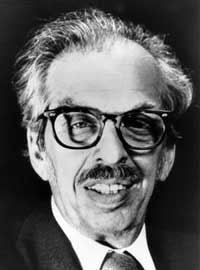 |
Hyman Lipman |
The first pencil with an attached eraser was invented by Hyman Lipman in Philadelphia in 1858. However, most pencils sold today do not come with an eraser!
The first erasers were made from natural rubber. Over time, erasers were made from synthetic rubber mixed with pumice (a lightweight, porous volcanic rock used for cleaning), which was later replaced by vinyl. Vinyl is a durable and flexible plastic.
Why Are Pencils Painted Yellow?
Pencils have been painted yellow since the 1890s, a bright color that makes them easy to find, as they can easily blend in on wooden desks. In the 1800s, the best graphite was imported from China. Therefore, manufacturers wanted people to know that their pencils were made from Chinese graphite. In China, yellow is the color of royalty and is highly respected. Americans painted their pencils bright yellow to evoke a “royal” feel and to indicate that the high-quality lead inside was linked to China.
Currently, 75% of pencils in the United States are painted yellow.
Famous People Who Used Pencils:
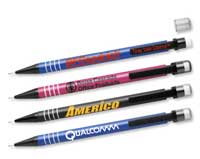 |
Mechanical Pencils |
John Steinbeck wrote The Grapes of Wrath and Cannery Row, using about 60 cedar pencils each day. Ernest Hemingway, author of The Old Man and the Sea and The Snows of Kilimanjaro, preferred cedar pencils to jot down his thoughts.
Before writing Walden, Henry David Thoreau created pencils in his father’s workshop. Thoreau’s pencils became famous for being the hardest and blackest in America.
Thomas Edison had the idea of keeping a 3.5-inch pencil in his vest pocket for note-taking. Pencils became a typical outlet for soldiers during the American Civil War.
Leonardo Da Vinci frequently used pencils for sketching.


















































